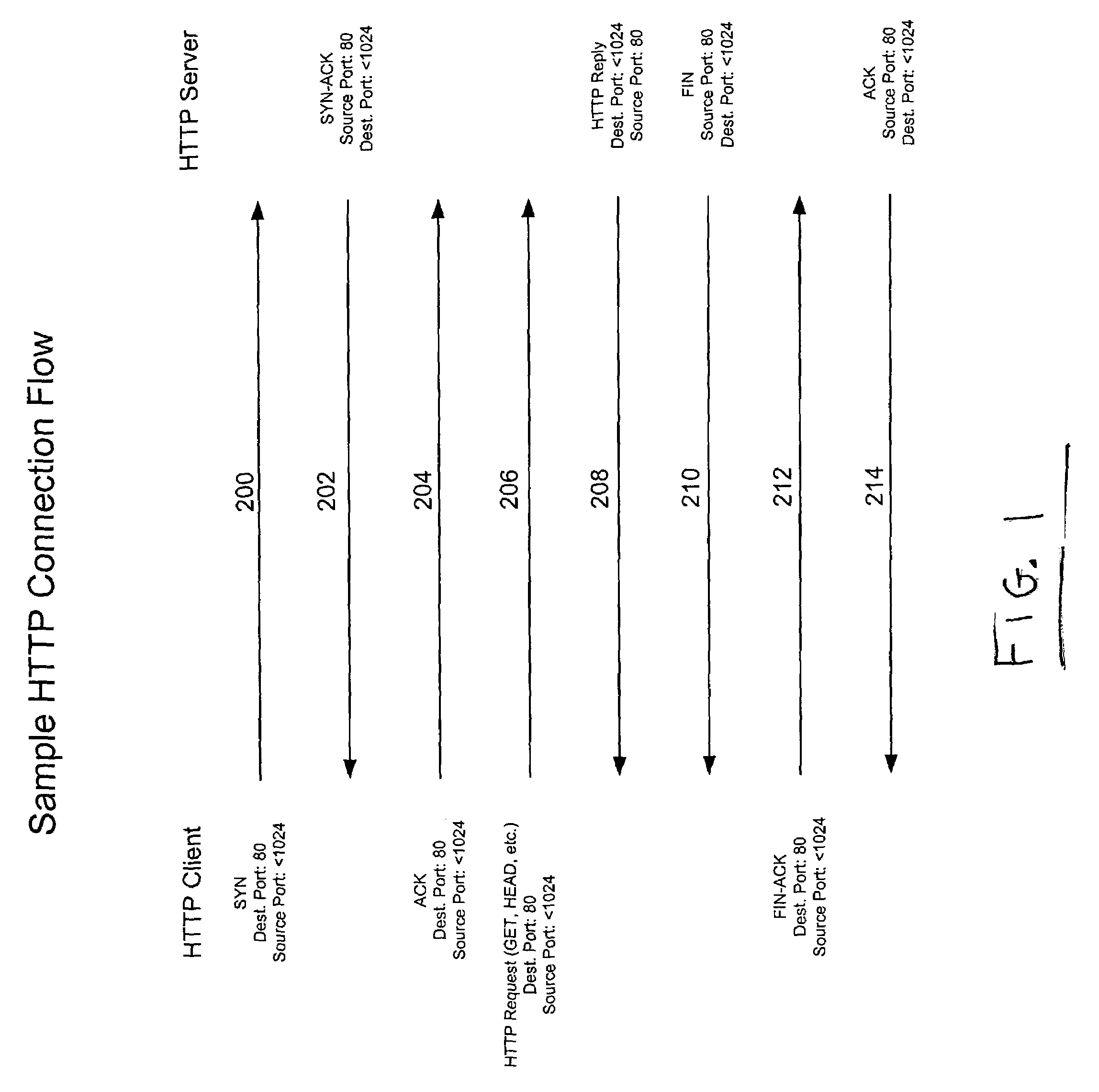Application protocol offloading
a technology of application protocol and offloading, applied in the field of web servers, can solve the problems of inefficiency of web servers in use today, inability to provide the most efficient and high performance environment, and generally not being able to provide the most cost-effective solution or even the best utilization of computing resources, so as to achieve less time, less latency, and processing more data
- Summary
- Abstract
- Description
- Claims
- Application Information
AI Technical Summary
Benefits of technology
Problems solved by technology
Method used
Image
Examples
Embodiment Construction
[0029]FIG. 1 is a schematic illustration of a system for application protocol offloading in accordance with the invention. Such a system provides the solution of separating the HTTP (Hypertext Transfer Protocol) processing (requests and responses) into multiple subsystems for processing independently and concurrently. While described in terms of HTTP, it is to be understood that the invention is applicable to other application level protocols, such as FTP, SMTP, XML, streaming media, and so forth.
[0030]A request 12 for information originates with a client 10, and is sent, via a network such as Internet 14, to a protocol offloading system 18. The protocol offloading system 18, which can be a combination of other protocol subsystems (not shown) in which one or multiple protocols are processed, processes the Ethernet, IP, TCP and HTTP protocols of the request. The processed request is then forwarded, as a pre-processed request, to separate data system 24, via communication channel 22. ...
PUM
 Login to View More
Login to View More Abstract
Description
Claims
Application Information
 Login to View More
Login to View More - R&D
- Intellectual Property
- Life Sciences
- Materials
- Tech Scout
- Unparalleled Data Quality
- Higher Quality Content
- 60% Fewer Hallucinations
Browse by: Latest US Patents, China's latest patents, Technical Efficacy Thesaurus, Application Domain, Technology Topic, Popular Technical Reports.
© 2025 PatSnap. All rights reserved.Legal|Privacy policy|Modern Slavery Act Transparency Statement|Sitemap|About US| Contact US: help@patsnap.com



